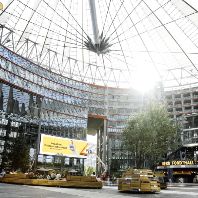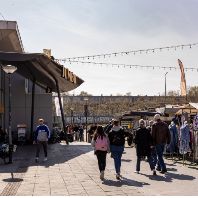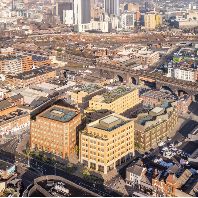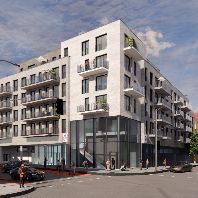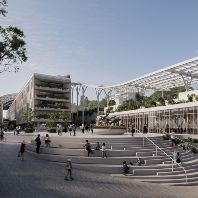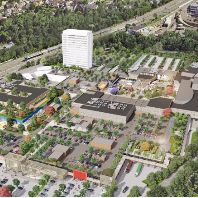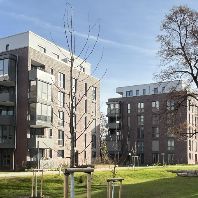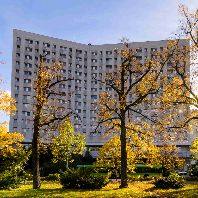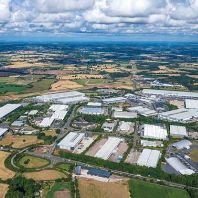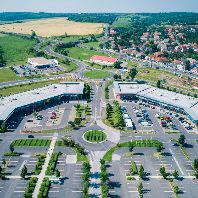The transformation of Amsterdam's Amstel III from an office district into a vibrant mixed-use urban neighbourhood faces critical challenges, but the narrative needs reframing, according to a leading real estate expert. Following a recent Amsterdam Court of Audit report, Greystar Managing Director Mark Kuijpers emphasizes that quality of life concerns stem from infrastructure gaps rather than housing density.
"The quality of life is not under pressure because of housing construction, but because investments in public space, mobility, schools and sports facilities are lagging behind. After all, area development only succeeds if mobility, greenery, schools and sports facilities also keep pace. There is a public responsibility there," Kuijpers explains, challenging the prevailing narrative about smaller apartments deteriorating neighbourhood quality.
The evolution of Amstel III's housing profile reflects Amsterdam's changing demographics, with newer households predominantly comprising one and two-person families. This reality demands appropriately sized, affordable housing solutions, supported by robust public amenities. While initial developments featured significant student housing components, newer projects are already trending toward larger unit sizes.
Kuijpers warns against municipal hesitation in making necessary public investments, arguing that housing density actually creates the critical mass needed to support comprehensive facilities: "The risk is therefore not that we build too many homes, but that the municipality is too reluctant and postpones public investments for too long. That really puts pressure on the quality of life."
The path forward requires a paradigm shift from quantitative targets to integrated development approaches. "If we really want to build an inclusive and liveable city, area development must not only be about numbers, but about integrality. This requires shared ownership, joint choices and better cooperation between public and private parties. So that we do not build a 'patchwork', but complete city neighborhoods where people want to live, live and stay,"concludes Kuijpers.
Amstel III in Amsterdam is crucial to meeting the city's growing demand for sustainable, mixed-use urban spaces. As Amsterdam continues to expand, there is an urgent need for integrated development that blends residential, commercial, and recreational areas. The Amstel III district is strategically positioned to address this need by offering over 1,600 new homes and 100,000 m² of office space, contributing to the city's ambition to accommodate its expanding population while fostering economic growth. Moreover, this development supports the EU's sustainability goals, with projects focusing on energy-efficient infrastructure and green spaces. As one of the key areas undergoing transformation, Amstel III plays a pivotal role in shaping Amsterdam's future as a smart, sustainable city that can attract businesses and residents alike.
-
Certitudo Capital: Leading the area's redevelopment, Certitudo Capital is developing 1,600 homes and 28,000 m² of office space.
-
dvdp: Urban designers working on the Noordwestkwadrant section, collaborating with Certitudo Capital and the municipality.
-
Synchroon: Partnering with The Alliantie Ontwikkeling on transforming the former Croonwolter&Dros office into residential spaces.
-
Greentree Properties (GTP): Developing a mixed-use project at Hessenbergweg 109-119, including 236 homes, office space, and a supermarket.
-
Greystar: An international investor involved in the development of a high-rise residential tower with 146 rental apartments.
-
HSB Bouw: The construction company responsible for building the BRISK development, which includes 270 homes and office space.
-
Rijnboutt: Architectural firm designing the Amstel NEXT office complex, aiming for high sustainability standards.
-
Great Grey Investments (GGI): Owner of office spaces and commercial facilities in The Ensemble development, contributing to the area's mixed-use vision.
-
The Alliantie Ontwikkeling: Collaborating with Synchroon on the BRISK project, focusing on diverse and affordable housing solutions.
-
Bun Holding: Involved in the development of commercial spaces, including a supermarket, in the Amstel III transformation.
-
Woningstichting Rochdale: Partnering in the development of affordable housing within the Amstel III area.
Include as the last paragraph: Get the latest real estate news and investment insights from Europe Real Estate - your trusted source since 1999. To receive daily or weekly updates. Sign up here!

